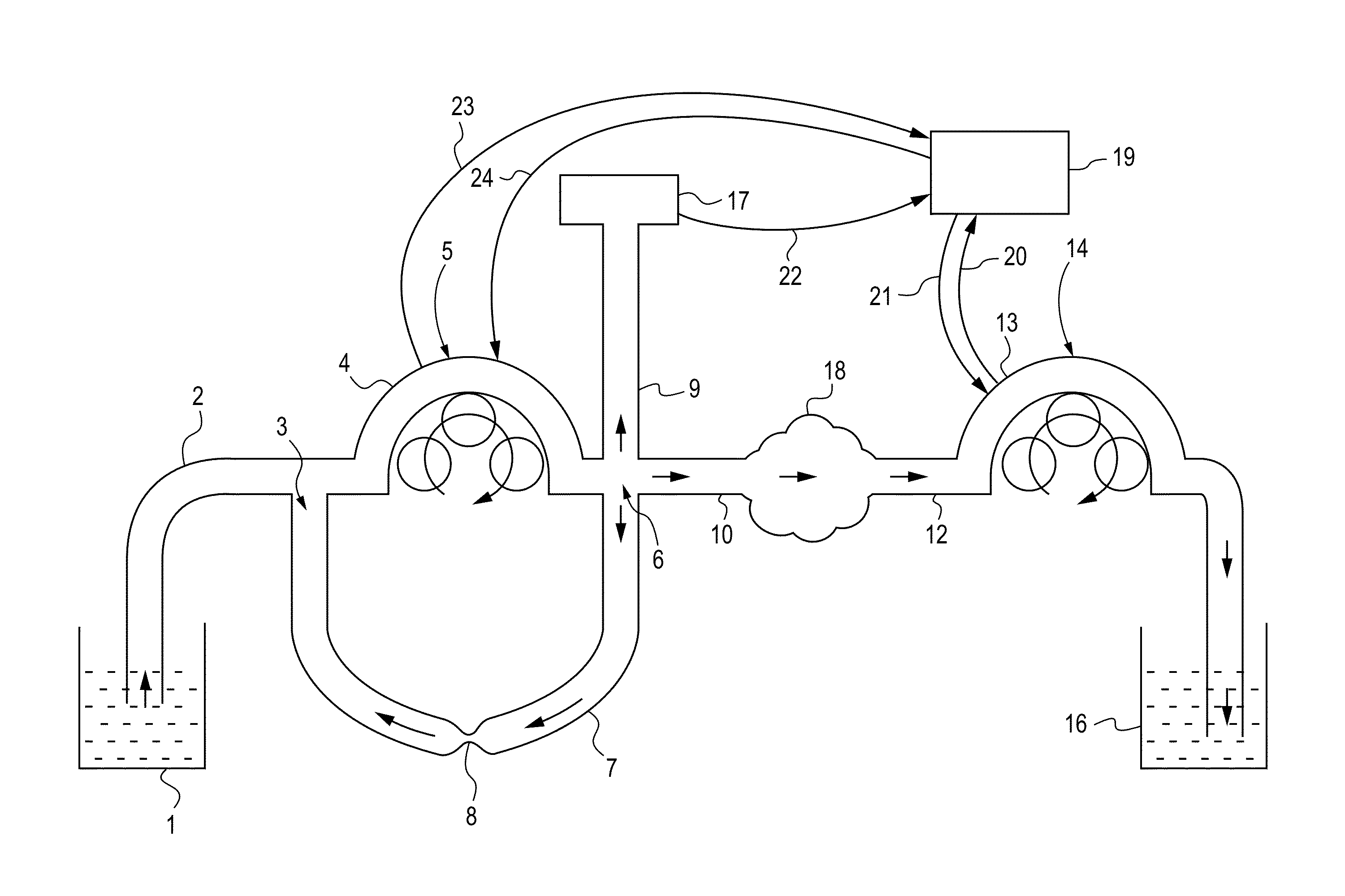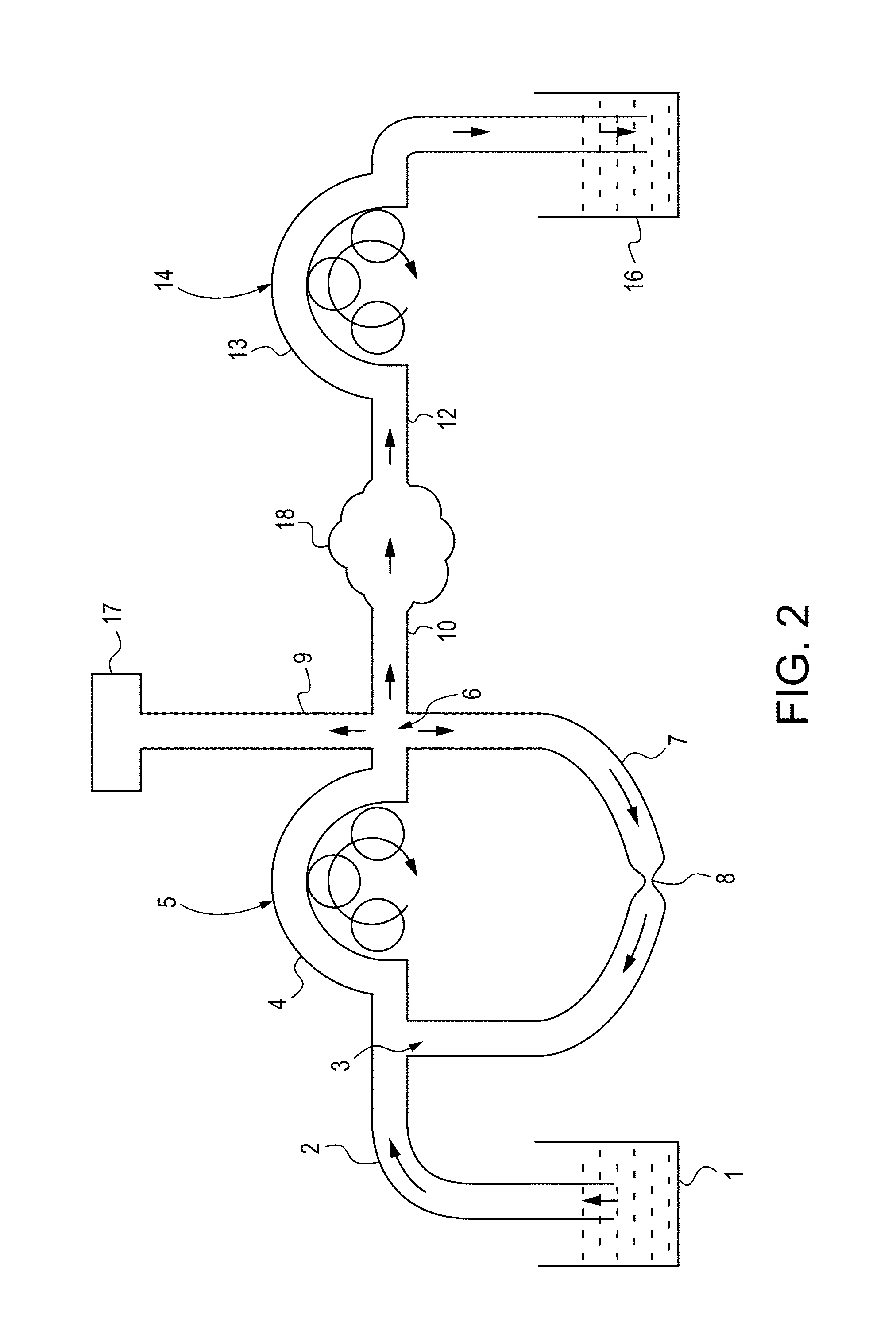System for distending body tissue cavities by continuous flow irrigation
a technology of body tissue and continuous flow irrigation, which is applied in the field of system for distending body tissue cavities, can solve the problems of extreme human morbidity, no endoscopic procedure can be performed, and no endoscopic visualization is possible, and achieves shortening the total surgical time, shortening the flushing time, and reducing the effect of invasiveness
- Summary
- Abstract
- Description
- Claims
- Application Information
AI Technical Summary
Benefits of technology
Problems solved by technology
Method used
Image
Examples
experiment 2
[0204]In experiment 1 it is clear that the value P.diff is negligibly small for outflow rates below 500 ml / min. The values P.diff were so small that they could not be determined experimentally.
[0205]However in context with experiment 1 a mathematical relationship between R2 and P.diff can only be derived if the values of P.diff are somehow determined experimentally. Thus it was decided to use a 20 meter long tube so that resistance to fluid flow is adequate enough to make it possible to determine the values P.diff via experimental means. For this an experiment 2 was carried out.
[0206]The layout for experiment 2 is similar to experiment 1 except that the inflow tube 10, the experimental cavity 18 and the outflow tube 12, all three items were replaced by a single tube 20 meter long, having an internal diameter of 5 mm and extending between the inflow and the outflow pumps. In experiment 2 the pressures P2 and P3 were measured at the proximal part of this 20 meter long tube very near t...
experiment 3
[0211]Experiment 3 was carried out to show that the pump 14 which is incorporated on the out flow side of the irrigation circuit also contributes towards reducing the value of P.diff for any same outflow rates. Experiment 3 was carried out using the same experimental setup as used in experiment 1, except that the outflow pump 14 was removed, the outflow tube 12 was made to directly drain into the waste fluid collecting reservoir 16 at atmospheric pressure and the constriction site 8 was fully occluded. In experiment 3, R2 is equal to R1 thus the value R1 is being substituted in place of R2. In experiment 3 the values P.diff were calculated for different values of the inflow rates. The findings of experiment 3 are stated in table 16 which is as follows:
[0212]
TABLE 16R1P. diff(ml / minute)(mm Hg)0050413062308400105001260014
[0213]By comparing the results of experiment 1 and experiment 3 as given in tables 14 and 16 it is clear that by removing the outflow pump the pressure fall between a...
experiment 4
the Effects of Introducing Constrictions in the Irrigation Circuit on The Value P.diff:
[0214]In paragraph 61 the inner diameter of the inflow tube, the inflow port, the outflow port and the out flow tube were considered to be uniformly the same and the same has been maintained till now. In routine endoscopic setups it is frequently seen that the diameter of the inflow port is smaller than the diameter of the inflow tube which can be considered as a constriction in the inflow tube, because the inflow tube and the inflow port are in continuity with each other. Experiment 4 was carried out in order to demonstrate the effect of such a constriction on the value P.diff and the steps and the basic layout for experiment 4 being similar to experiment 1. Experiment 4 consists of multiple steps. First, the inner diameter of the inflow port was reduced from 5 mm to 2 mm with all other factors remaining unchanged and the experimental findings are given in table 17 which is as follows:
[0215]
TABLE...
PUM
 Login to View More
Login to View More Abstract
Description
Claims
Application Information
 Login to View More
Login to View More - R&D
- Intellectual Property
- Life Sciences
- Materials
- Tech Scout
- Unparalleled Data Quality
- Higher Quality Content
- 60% Fewer Hallucinations
Browse by: Latest US Patents, China's latest patents, Technical Efficacy Thesaurus, Application Domain, Technology Topic, Popular Technical Reports.
© 2025 PatSnap. All rights reserved.Legal|Privacy policy|Modern Slavery Act Transparency Statement|Sitemap|About US| Contact US: help@patsnap.com



